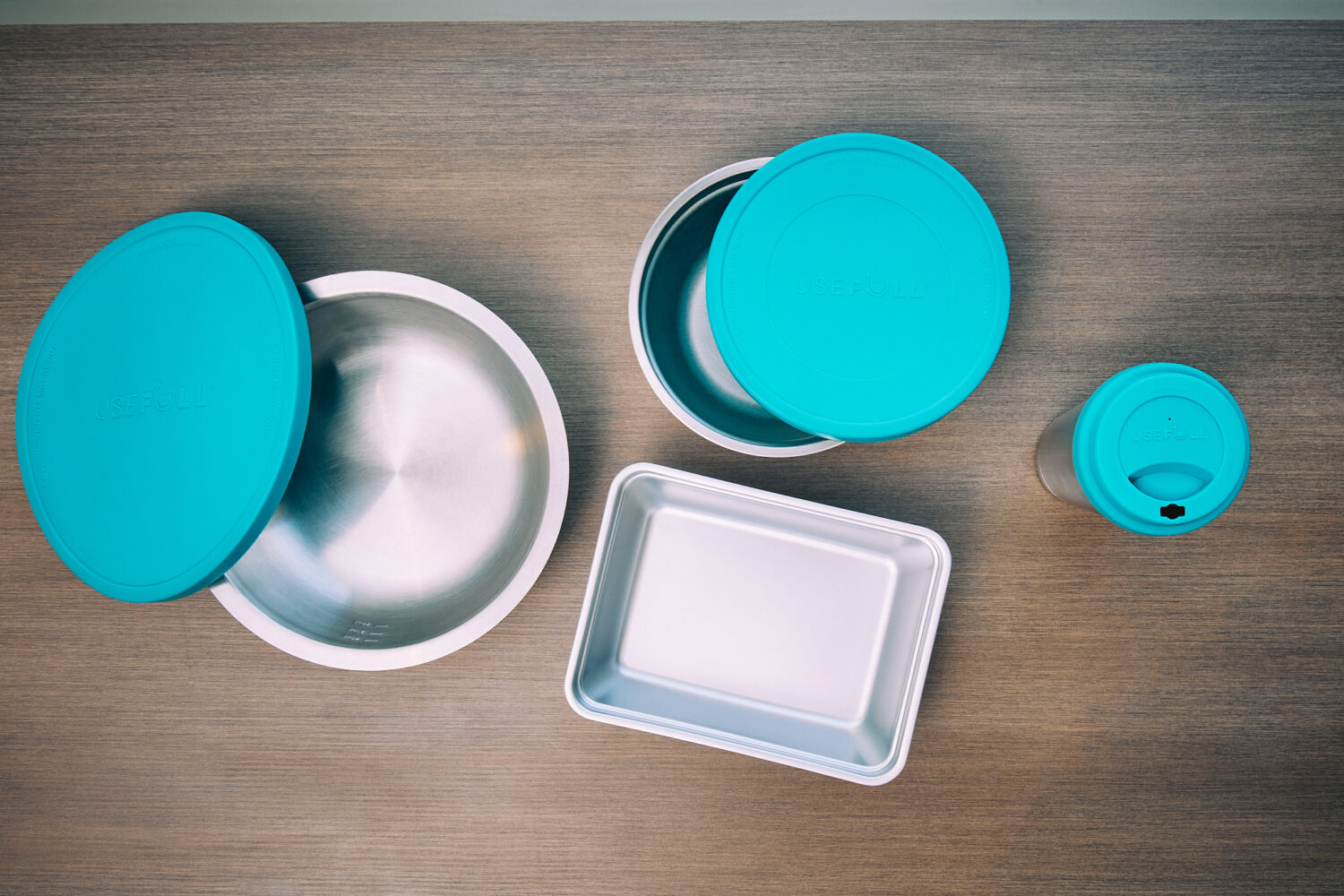When it comes to implementing a reusable container program in your college residential and retail foodservice operations, selecting the right container type is crucial for your program’s success. Here are container qualities you should consider as you start your reuse journey:
1. Material
The campus reusable products currently on the market are made of either plastic or stainless steel. So, which is best? Let’s take a look at a few factors:
Durability
When a container is intended for repeat use, it’s important to ensure that it can resist wear and tear as much as possible.
Plastic: Although plastic containers may seem cost-effective initially, their lower durability leads to a shorter lifespan and ultimately higher replacement costs. As containers are thrown away and replaced, this creates even more of a problem for our landfills.
Stainless Steel: Stainless steel containers are built to withstand repeated use, resist damage from transportation and handling, and are unlikely to be confused with trash and discarded—a problem often seen with plastic reusables.
How USEFULL does it: Our containers are rated for more than three years of use, with a likelihood to last much longer. With a 99% return rate, we have containers that have been used more than 300 times already and are still going strong.
End-of-Life Considerations
While many kinds of materials can technically be recycled, the reality of recycling rates and processes are important to consider. What will happen to your container after it’s retired?
Plastic: In the US, only about 10% of plastic is ever recycled. Why? It’s significantly cheaper to produce virgin plastic than to recycle it, and most parts of the US lack the proper infrastructure to reprocess the plastic we throw out. This means that reusable plastic containers can end up in land-fills, just like single-use ones—only these ones are thicker and take even more time to break down.
Stainless steel: A sturdy alloy of chromium and steel, stainless steel can be recycled infinite times without degrading in quality. And due to the high value of the material, there is a high incentive to reprocess it for a new life.
How USEFULL does it: Our containers are made from recycled stainless steel, and they’re 100% recycled after retirement. Plus, unlike plastic reusables, they are never mistaken for trash!
User Experience
For a reuse program to be successful across the board, your reusables should provide an exemplary user experience. Containers should enable students to enjoy their takeout meals at the appropriate temperature, and without making a mess in their bag during transport.
Plastic: Plastic containers do not retain heat or cold and should not be microwaved due to the risk of microplastic release. With repeat use, clamshell-style plastic containers can have their lids detach. They also tend to “sweat” due to condensation from cold food, which can make a mess in a backpack.
Stainless Steel: Some models of stainless steel containers provide insulation, keeping food at its serving temperature for several hours. While metal can’t be microwaved, reheating often isn’t necessary as students tend to eat their takeout meal within a few hours after pickup.
How USEFULL does it: Our double-walled containers are sweat-free and keep food fresh at serving temperature for up to five hours, and their silicone lids fit snugly on top to prevent in-transit spillage.
2. Breadth of Options
Meeting Diverse Needs
It’s helpful to choose a reusable program that offers a variety of container shapes and sizes to accommodate the unique menu offerings and portion sizes of your foodservice operation.
Flexibility Over Time
The takeout needs you have this year may not be the same as the takeout needs you’ll have next year. As dining preferences and operational needs change, you’ll want to be able to adapt your container inventory accordingly.
Branding Opportunities
Consider whether you want to personalize your reusable containers with your campus colors or logo, and check to make sure the programs you’re evaluating offer product customization.
How USEFULL does it: We know every campus is different, which is why we’re committed to creating your reuse program alongside you to deliver to your unique needs. Choose from a variety of inventory options—with lid color and logo customization available—and know that as your USEFULL program matures, our team is here to grow it with you.
3. Ease of Operations
Durability and Cleanability
Any good reusable container should be designed for easy cleaning and sanitation to maintain hygiene. While plastic might leave you with spaghetti stains, stainless steel is highly resistant to stains and odors.
Food Preparation
When turning out high volumes of food quickly, having visual aids like measurement marks etched inside containers are extremely helpful for kitchen staff to consistently follow standard recipe builds.
Stackability and Storage
When they’re not being used, your containers need somewhere to go! Opt for containers that are stackable or nestable to maximize storage space efficiency.
Speed of Service
A fast and seamless system for checkout and return, facilitated by tracking technology, is crucial for a smooth-running program where busy students are the primary user group.
How USEFULL does it: We kept all of these priorities in mind while building the USEFULL program, which features stackable containers embossed with measurement markers. Our reusables are also equipped with trackable QR codes, ensuring return rates of 99%+.
4. Container Cost and ROI
Though there are costs associated with implementing a reusable program, it’s important to remember that the expense is offset by the fact that you’ll no longer be constantly purchasing single-use packaging.
Return on investment is also a key consideration. While stainless steel containers may have a higher initial investment due to their superior quality, their durability and extended lifespan typically results in a stronger return compared to plastic containers.
How USEFULL does it: We offer an inventory leasing option that makes our durable stainless steel containers more affordable than purchasing them outright. Our flat monthly fee also covers the maintenance, repair, and replacement of containers, further simplifying operations.
Choosing the right type of container for your campus reusable program requires careful consideration of various factors. Evaluate the pros and cons outlined above to determine the best fit for your dining hall and contribute to a more sustainable campus.
Interested in bringing the USEFULL program to your campus? Drop us a line!






